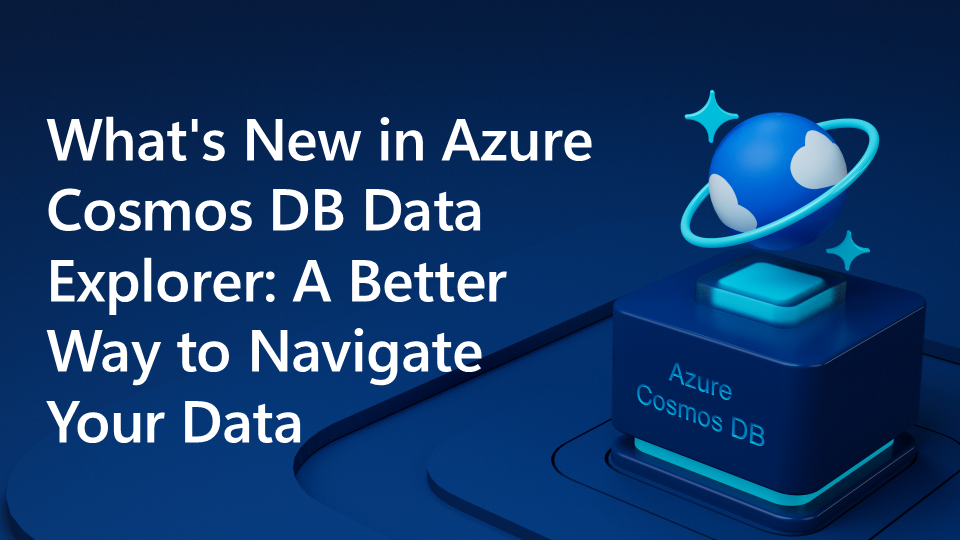As a developer, you may have to work on various projects that involve storing and querying data from different regions and devices. Whether you are building a web application, a mobile app, a gaming platform, or an IoT solution, you want a database that can handle the complexity and scale of your data without compromising on performance and availability. You also want to have a convenient and intuitive way to explore and manage your data and resources from a single interface. That’s where Azure Cosmos DB and its Data Explorer come in handy.
Azure Cosmos DB is a fully managed NoSQL database service that offers fast and flexible data access, global distribution, and scalability. One of the tools that helps you interact with your Cosmos DB data is the Data Explorer within the Azure Portal and it’s also a standalone, full screen, web app via cosmos.azure.com. It lets you create, query, and manage your data and resources.
In this blog post, we are excited to announce some changes and improvements to Azure Cosmos DB Data Explorer that will make your experience more productive and enjoyable. These changes are based on your feedback and suggestions, and we hope you will love them as much as we do. To share feedback, click the Feedback icon in the Azure portal on any Azure Cosmos DB blade, or submit it through the Net Promotor Score (NPS) survey.
One of the changes we have made to Azure Cosmos DB Data Explorer is the new and improved resource tree.
The resource tree is the directory structure that shows your Cosmos DB databases, containers, and other resources. It helps you navigate and access your data with ease and efficiency. We have redesigned the resource tree to make it more user-friendly and convenient.
Here are some of the benefits of the new Data Explorer resource tree:
- You can easily navigate back to the home page from any level of the tree with the new Home button at the top node.
- You can quickly access the most common actions you need to perform, such as creating a new collection and database, with the new “Global Commands” split button just above the resource tree.
- You can enjoy a cleaner and more consistent look of the resource tree, with labels that clearly indicate the type of each node.
- You can also easily expand and collapse the nodes with a single click or use the tab focus and arrow keys on your keyboard to navigate between them.
- You can filter your data more easily and intuitively, with the new placement of the “Edit Filter” button and the more visible and accessible filter row.
- You can read your data more clearly and uniformly, with the new table header and row heights.
- You can adjust the width of the tree by dragging its edge. This helps you customize the layout of your data and see more or less detail in the tree and the table.
These are just some of the benefits of the new Data Explorer tree in the latest update. We hope you will find them useful and enjoyable, and we would love to hear your feedback and suggestions on how we can make Azure Cosmos DB Data Explorer even better. Please feel free to leave a comment below, or provide feedback via the feedback icon on any Azure Cosmos DB blade within the portal. Thank you for using Azure Cosmos DB and happy exploring!
About Azure Cosmos DB
Azure Cosmos DB is a fully managed and serverless distributed database for modern app development, with SLA-backed speed and availability, automatic and instant scalability, and support for open-source PostgreSQL, MongoDB, and Apache Cassandra. Try Azure Cosmos DB for free here. To stay in the loop on Azure Cosmos DB updates, follow us on X, YouTube, and LinkedIn.



Hi!
is the CosmosDB emulator (more specifically the docker image version) dead?
The Github repo is full with bug reports, but no one seems to look at them. Some are 2 years old….
https://github.com/Azure/azure-cosmos-db-emulator-docker/issues?q=is%3Aissue+is%3Aopen+sort%3Aupdated-desc.